 Your mouth contains thousands of nerve endings which makes it sensitive to pain. If you ever have had a toothache, you know how excruciating it can get. This is why dentists like to numb the part of your mouth they’re about to work on. Numbing agents prevent the nerve endings from sending pain signals to the brain. Done properly and you won’t feel a thing while getting a root canal, extraction or other dental work.
Your mouth contains thousands of nerve endings which makes it sensitive to pain. If you ever have had a toothache, you know how excruciating it can get. This is why dentists like to numb the part of your mouth they’re about to work on. Numbing agents prevent the nerve endings from sending pain signals to the brain. Done properly and you won’t feel a thing while getting a root canal, extraction or other dental work.
Dentistry has come a long way since the wild wild west days. Back in the 1800’s, you’d have to visit a barber if you want a painful tooth extracted. There were no numbing agents, just a couple of swigs of whisky and the barber telling you to “be a man” while he places his foot on your chest for leverage and yanks out the tooth with a pair of pliers.
Nowadays dentists use all sorts of techniques and numbing agents to help their patients feel comfortable. In most cases people feel zero pain. It’s only after the numbing agent wears off does the pain start to kick in, and that can easily be managed with over-the-counter Ibuprofen. We’re going to look at the various numbing options out there, what type of procedure they’re generally used for, potential reactions you may have, and any benefits from a comfort standpoint.
Novocain / Lidocaine
Novocain was invented by a German chemist in 1905. It is injected by a needle into the area in your mouth the dentist wants to numb. It’s considered to be a local anesthetic as it won’t put you to sleep or make you groggy.
Over the years, most dentists have switched to a product called “Lidocaine” which is faster acting and lasts longer than Novocain.
The dentist determines the proper dosage and then sticks the needle into your mouth. A skilled dentist can minimize or almost eliminate the tiny sting of the needle by gentle vibrating the area to be injected.
Lidocaine/Novocain are generally considered to be safe. As with anything medical, there are people out there who might experience an allergic reaction. Chest pain, dizziness, nausea or shaking have all been reporting by people who suffer from an allergic reaction. It’s not known if this form of anesthetic is harmful to unborn babies. If you’re pregnant, be sure to let your dentist know.
Laughing Gas / Nitrous Oxide
Most dental offices are equipped with nitrous oxide. The purpose of it is to lightly sedate the patient without putting them to sleep completely. You will be able to hear and respond to any verbal directions your dentist may give you while under the effects of nitrous.
Nitrous is administered through a small plastic mask that is placed over your nose. It’s mixed with oxygen to render it completely safe. It may take several minutes for the effects of the gas to take hold.
You will most likely feel a deep sense of calm which can alleviate the nervousness that some people suffer from when sitting in the dental chair. You could feel light-headed or have a small tingling sensation in your arms and legs. The effects of nitrous wear off shortly after the mask is removed from your face.
Nitrous is sometimes used in conjunction with Lidocaine and other injectable numbing agents. It helps alleviate the nervousness that people sometimes suffer from when it comes to dentists and needles.
As with any medical procedure, a small portion of the population might experience side effects such as nausea, headache, increased sleepiness or excessive sweating. Be sure to inform your dentist if you start to feel any side effects.
Numbing Jelly
Numbing jelly acts the same was as Lidocaine, with one major difference: No needles. The dentist simply dips a Q-tip into a small tub of numbing jelly and then gently applies it to the area he will be working on. The numbing effect starts in as little as 90 seconds.
Most numbing jellies contain gluten, so if you have a gluten sensitivity, let your dentist know beforehand.
Triazolam
Triazolam is a little blue pill you take on an empty stomach 1 hour prior to your dental appointment. It has the same calming effect as nitrous oxide, with one additional benefit.
Triazolam is from the Valium family and is a prescribed narcotic. Prior to your dental appointment your dentist might write you a prescription for it. Fill the prescription and take the pill and by the time the dentist is working inside your mouth, you’ll feel worry-free.
Triazolam does not stop the pain of dental work by itself. Dentists will still use injectable numbing agents such as Lidocaine. It is merely to help provide comfort and peace of mind to the patient while they’re getting dental work done.
The benefit that Triazolam has over nitrous oxide is that there is a slight amnesia effect. A few hours after your dental procedure, you might find it hard to recall exactly what happened. This is a good thing for people who are scared of dentists or have to undergo major dental work.
As with any narcotic, you might feel some side-effects. You could feel dizzy, tired, nervous, excited or even get a headache. It should be noted that Triazolam will render you legally unable to drive a car. You will need to find a ride to and from the dental office as the drug lasts anywhere from 3-5 hours.
Sedation
For some people, numbing agents and little blue pills aren’t enough. They want to be put to sleep for the entire dental procedure. Sedation is only normally done in such cases as a severely impacted wisdom tooth or other complication which requires the services of an oral surgeon. Sedation could be administered by inhalation, injection or orally.
If the patient requests sedation, a trained dental anesthesiologist must be hired to put you to sleep. This adds a significant cost to the procedure and could negatively impact the quality of the dentistry. The dental anesthesiologist will only allow you to be asleep for so long, then safety protocols dictate you be woken up. This puts additional strain and pressure on the dentist and could potentially compromise the quality of the work done.
While dental anesthesiology is considered safe, there are always risks when you get put to sleep. It’s advised that you forgo being completely sedated for minor dental procedures. Numbing agents, nitrous and even Triazolam work extremely well for helping you mentally cope with the dental visit.
Compounded Topical Anesthetic
There are products on the market that combine tetracaine, lidocaine, and prilocaine in order to form a kind of super numbing gel. These compounds are usually made by local dental pharmacies. There are several medical benefits to using these gels – the biggest one being no needle is required.
The risks are minimal and if you were to experience side effects it would be the same side effects experienced with Lidocaine or other numbing agents. If you’re pregnant, be sure to advise your dentist prior to receiving the numbing gel.
Vibraject™ / DentalVibe™
These devices are relatively new. Their aim is to make injections less painful. They accomplish this by attaching to a conventional dental syringe. The battery cap is twisted, thereby providing power to the small device. It vibrates the area in the mouth where the syringe will be injected. The vibration prevents the nerves in the injection area from sending pain signals to the brain, thereby making the injection area painless.
Which Method is Right for Me?
The only way you’ll know for sure is to sit down with your dentist and discuss the options along with their pros and cons. Be sure to let your dentist know of any pre-existing health conditions, allergies and any other potential complications (such as pregnancy).
At Water Tower Dental Care, we pay special attention to the comfort of our patients. There are a wide variety of options available to help make your dental visit a pleasant one. Give us a call to schedule an appointment and Dr. Aneszko or Dr. Stino will go over your options and discuss which one is right for you.


 There are a lot of things that a pregnant woman shouldn’t do, such as smoke, drink, or engage in heavy physical work. The health and well-being of the baby are dependent upon the choices that Mom makes while she is pregnant.
There are a lot of things that a pregnant woman shouldn’t do, such as smoke, drink, or engage in heavy physical work. The health and well-being of the baby are dependent upon the choices that Mom makes while she is pregnant.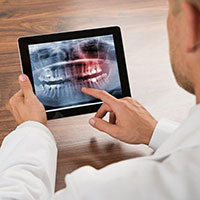 The very first X-ray machine was invented in 1895 by a German physicist named Wilhelm Röntgen. The medical community immediately saw the benefits and started using X-rays to diagnose and treat their patients.
The very first X-ray machine was invented in 1895 by a German physicist named Wilhelm Röntgen. The medical community immediately saw the benefits and started using X-rays to diagnose and treat their patients.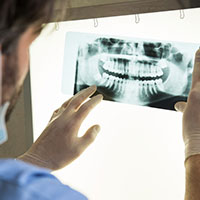 Dental X-Rays can tell a dentist a lot about your teeth and any underlying conditions that you might be suffering from. It gives them a clear picture of what’s going on inside your mouth without the need for a surgical incision.
Dental X-Rays can tell a dentist a lot about your teeth and any underlying conditions that you might be suffering from. It gives them a clear picture of what’s going on inside your mouth without the need for a surgical incision.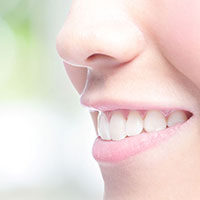 Do you avoid smiling because you have an uneven or chipped front tooth? Are your canine teeth too sharp-looking, or are your front two teeth too long?
Do you avoid smiling because you have an uneven or chipped front tooth? Are your canine teeth too sharp-looking, or are your front two teeth too long?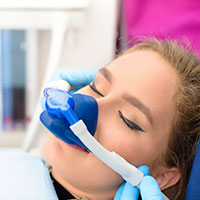 Does the thought of going to the dentist stress you out so much that you’ve been putting off getting that much-needed work done?
Does the thought of going to the dentist stress you out so much that you’ve been putting off getting that much-needed work done? Temporomandibular joint dysfunction (TMJ) is a condition that affects the jaw, muscles that control jaw movement, and jaw joints. It is often characterized by noticeable pain and discomfort in those who suffer from it. The good news is that
Temporomandibular joint dysfunction (TMJ) is a condition that affects the jaw, muscles that control jaw movement, and jaw joints. It is often characterized by noticeable pain and discomfort in those who suffer from it. The good news is that  There are very few people in life who have absolutely perfect teeth. For the rest of us, we have to suffer through cavities, embarrassing dental checkups, and the occasional root canal. While genetics play an important role in who wins the dental lottery, regular maintenance such as brushing and flossing play an even bigger role in preventing tooth decay, cavities, and extractions.
There are very few people in life who have absolutely perfect teeth. For the rest of us, we have to suffer through cavities, embarrassing dental checkups, and the occasional root canal. While genetics play an important role in who wins the dental lottery, regular maintenance such as brushing and flossing play an even bigger role in preventing tooth decay, cavities, and extractions. Cleidocranial Dysplasia was a relatively unknown condition in popular culture until one of the stars of the hit Netflix series Stranger Things went public.
Cleidocranial Dysplasia was a relatively unknown condition in popular culture until one of the stars of the hit Netflix series Stranger Things went public.  Water Tower Dental Care is pleased to announce that we’re offering
Water Tower Dental Care is pleased to announce that we’re offering  The American Association of Oral and Maxillofacial Surgeons (AAOMS) reports that 69% of adults from age 35-44
The American Association of Oral and Maxillofacial Surgeons (AAOMS) reports that 69% of adults from age 35-44  When your dentist informs you that you might benefit from an orthodontic treatment, a whole host of questions can arise. What are my options? What is the cost? What will be the most effective?
When your dentist informs you that you might benefit from an orthodontic treatment, a whole host of questions can arise. What are my options? What is the cost? What will be the most effective? Your mouth contains thousands of nerve endings which makes it sensitive to pain. If you ever have had a toothache, you know how excruciating it can get. This is why dentists like to numb the part of your mouth they’re about to work on. Numbing agents prevent the nerve endings from sending pain signals to the brain. Done properly and you won’t feel a thing while getting a root canal, extraction or other dental work.
Your mouth contains thousands of nerve endings which makes it sensitive to pain. If you ever have had a toothache, you know how excruciating it can get. This is why dentists like to numb the part of your mouth they’re about to work on. Numbing agents prevent the nerve endings from sending pain signals to the brain. Done properly and you won’t feel a thing while getting a root canal, extraction or other dental work. Dentistry has come a long way over the past 50 years. A set of removable dentures used to be the only option for replacing missing teeth. They looked fake and you had to take them out of your mouth when eating certain foods. Both dentists and denture recipients were not happy with the end results.
Dentistry has come a long way over the past 50 years. A set of removable dentures used to be the only option for replacing missing teeth. They looked fake and you had to take them out of your mouth when eating certain foods. Both dentists and denture recipients were not happy with the end results. One of the most popular solutions to missing teeth is
One of the most popular solutions to missing teeth is 


 For teens and adults considering Invisalign, the nearly invisible aligner treatment is a big draw. But the fear of developing a lisp is enough to make many people reconsider. After all, what’s the point of investing in invisible orthodontic work if one of the potential side effects would quickly reveal the secret?
For teens and adults considering Invisalign, the nearly invisible aligner treatment is a big draw. But the fear of developing a lisp is enough to make many people reconsider. After all, what’s the point of investing in invisible orthodontic work if one of the potential side effects would quickly reveal the secret? Replacing a lost tooth isn’t always a walk in the park. Sometimes, you don’t have enough bone in your upper jaw to support an implant. That’s where a sinus lift comes in.
Replacing a lost tooth isn’t always a walk in the park. Sometimes, you don’t have enough bone in your upper jaw to support an implant. That’s where a sinus lift comes in. Open bites can be a real hassle. Not only can they make your smile look strange, but they can also lead to serious dental problems. Braces, bite blocks and headgear used to be your only option for treating dental open bites. But nowadays, we have a much more discreet and much less invasive way to fix open bites:
Open bites can be a real hassle. Not only can they make your smile look strange, but they can also lead to serious dental problems. Braces, bite blocks and headgear used to be your only option for treating dental open bites. But nowadays, we have a much more discreet and much less invasive way to fix open bites:  Do you notice that your top teeth bite down on the inside of your bottom teeth? If so, you might have a crossbite. Though crossbites don’t necessary cause direct pain right off the bat, they can lead to serious issues in the future. The only way to treat crossbite back in the day was with braces or expanders. Thankfully, there are less invasive ways to get your crossbite corrected today. We’re going to discuss how
Do you notice that your top teeth bite down on the inside of your bottom teeth? If so, you might have a crossbite. Though crossbites don’t necessary cause direct pain right off the bat, they can lead to serious issues in the future. The only way to treat crossbite back in the day was with braces or expanders. Thankfully, there are less invasive ways to get your crossbite corrected today. We’re going to discuss how  Do you feel like your teeth are beyond repair? You’ve come to the right place. When you’ve suffered a serious trauma or have left teeth untreated for a long period of time, you might feel like giving up hope on your smile. But the reality is, getting a full-mouth reconstruction can leave your teeth looking as good as new!
Do you feel like your teeth are beyond repair? You’ve come to the right place. When you’ve suffered a serious trauma or have left teeth untreated for a long period of time, you might feel like giving up hope on your smile. But the reality is, getting a full-mouth reconstruction can leave your teeth looking as good as new! Before and after getting full-mouth reconstruction at Water Tower Dental Care.[/caption]
Before and after getting full-mouth reconstruction at Water Tower Dental Care.[/caption] After you’ve worked so hard to make your teeth shine, the last thing you want is for your gums to cover them up. A gummy smile can make your teeth look stubby and short. But underneath those gums is a gorgeous set of pearly whites.
After you’ve worked so hard to make your teeth shine, the last thing you want is for your gums to cover them up. A gummy smile can make your teeth look stubby and short. But underneath those gums is a gorgeous set of pearly whites. 
 Repairing a chipped tooth is usually not as hard as one would imagine. Through several different processes, depending on the severity of the chipped tooth, a dentist can make your smile look good as new.
Repairing a chipped tooth is usually not as hard as one would imagine. Through several different processes, depending on the severity of the chipped tooth, a dentist can make your smile look good as new. When the word cosmetic is used, most people immediately think of vanity, and changing your appearance for aesthetic reasons, rather than functional ones. However, when it comes to cosmetic veneers, there are many helpful reasons why one would want them, other than cosmetic reasons. Here’s how cosmetic veneers can do more than give you a better-looking smile.
When the word cosmetic is used, most people immediately think of vanity, and changing your appearance for aesthetic reasons, rather than functional ones. However, when it comes to cosmetic veneers, there are many helpful reasons why one would want them, other than cosmetic reasons. Here’s how cosmetic veneers can do more than give you a better-looking smile.


 Invisalign is one of the best dental advancements in the recent decades. By using a silicone-based mold to shape a person’s teeth, the use of traditional metal braces is no longer needed. This helps reduce unsightly and embarrassing moments with wire braces along with painful side effects. The aspects of Invisalign are quite simple, and with just a few visits to your dentist, you can start the process to a straighter smile.
Invisalign is one of the best dental advancements in the recent decades. By using a silicone-based mold to shape a person’s teeth, the use of traditional metal braces is no longer needed. This helps reduce unsightly and embarrassing moments with wire braces along with painful side effects. The aspects of Invisalign are quite simple, and with just a few visits to your dentist, you can start the process to a straighter smile. Invisalign aligners are replaced every two weeks for approximately six months to a year. The aligners are recommended to be worn for 20 to 22 hours a day and should only be removed for eating meals and when drinking any liquid that is not water.
Invisalign aligners are replaced every two weeks for approximately six months to a year. The aligners are recommended to be worn for 20 to 22 hours a day and should only be removed for eating meals and when drinking any liquid that is not water. Losing a tooth either by accident or through declining oral health can be a tough experience. It can affect your confidence and well-being along with your oral health. Dental implants are a great way to keep your smile looking great and prevent further damage to your mouth. Of course, dental implants aren’t as simple as one would hope and there are several aspects to receiving an implant. However, if you practice good oral hygiene and are in the hands of an experienced dentist, you should have no problem rebuilding an excellent smile.
Losing a tooth either by accident or through declining oral health can be a tough experience. It can affect your confidence and well-being along with your oral health. Dental implants are a great way to keep your smile looking great and prevent further damage to your mouth. Of course, dental implants aren’t as simple as one would hope and there are several aspects to receiving an implant. However, if you practice good oral hygiene and are in the hands of an experienced dentist, you should have no problem rebuilding an excellent smile. It can take two weeks to a month for your jawbone to osseointegrate properly with the anchor. During that time, most patients are given a denture or temporary bridge to replace the missing tooth. Once the anchor is ready, the dentist will add a small connector to the anchor known as an abutment. The abutment connects the anchor to the replacement tooth
It can take two weeks to a month for your jawbone to osseointegrate properly with the anchor. During that time, most patients are given a denture or temporary bridge to replace the missing tooth. Once the anchor is ready, the dentist will add a small connector to the anchor known as an abutment. The abutment connects the anchor to the replacement tooth Teeth whitening isn’t just for aesthetic purposes anymore. Did you know it can actually have oral health benefits? While many patients come to our offices to receive safe and fast teeth whitening to make their smiles brighter and give themselves a great boost of confidence, many don’t realize that they are also helping control the pH level of their mouth. This is an important factor when it comes to controlling plaque, bacteria, and tooth decay.
Teeth whitening isn’t just for aesthetic purposes anymore. Did you know it can actually have oral health benefits? While many patients come to our offices to receive safe and fast teeth whitening to make their smiles brighter and give themselves a great boost of confidence, many don’t realize that they are also helping control the pH level of their mouth. This is an important factor when it comes to controlling plaque, bacteria, and tooth decay. Digital Radiography is the process of taking x-rays using digital components rather than film. There are many benefits to digital x-rays compared to the old, film versions of x-rays. Not only is it safer, it’s quicker, more efficient, and can help save your teeth from unseeable damage.
Digital Radiography is the process of taking x-rays using digital components rather than film. There are many benefits to digital x-rays compared to the old, film versions of x-rays. Not only is it safer, it’s quicker, more efficient, and can help save your teeth from unseeable damage.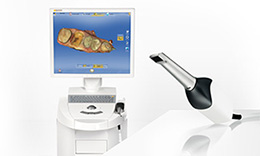 Water Tower Dental is committed to staying at the forefront of technological advancements in the field of dentistry. One of the most exciting advancements in the last few years has been the introduction and updates of the CEREC, a software innovation that allows dentists to digitally design all-ceramic crowns and porcelain veneers in just one visit.
Water Tower Dental is committed to staying at the forefront of technological advancements in the field of dentistry. One of the most exciting advancements in the last few years has been the introduction and updates of the CEREC, a software innovation that allows dentists to digitally design all-ceramic crowns and porcelain veneers in just one visit.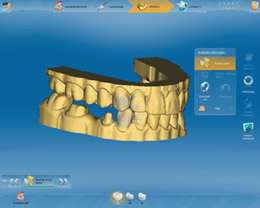 The beginning of the crown process is the same. First, your dentist will shave down your tooth to prepare it for a crown. However, rather than a wax mold, your dentist is able to use the CEREC scanner to make a 3D image of your tooth and the surrounding area. The image is uploaded to a design unit with uses CAD/CAM software to create a 3D model of the new crown.
The beginning of the crown process is the same. First, your dentist will shave down your tooth to prepare it for a crown. However, rather than a wax mold, your dentist is able to use the CEREC scanner to make a 3D image of your tooth and the surrounding area. The image is uploaded to a design unit with uses CAD/CAM software to create a 3D model of the new crown.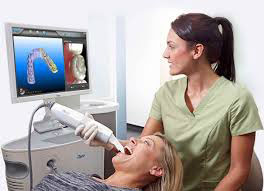 Dentistry has never been at a more exciting time when it comes to the rise of technology to help service the needs of the patient. One of the best technological developments is the iTero digital scanner. How does an iTero work, and how can it help you?
Dentistry has never been at a more exciting time when it comes to the rise of technology to help service the needs of the patient. One of the best technological developments is the iTero digital scanner. How does an iTero work, and how can it help you?




 Website Powered by Sesame 24-7™
Website Powered by Sesame 24-7™